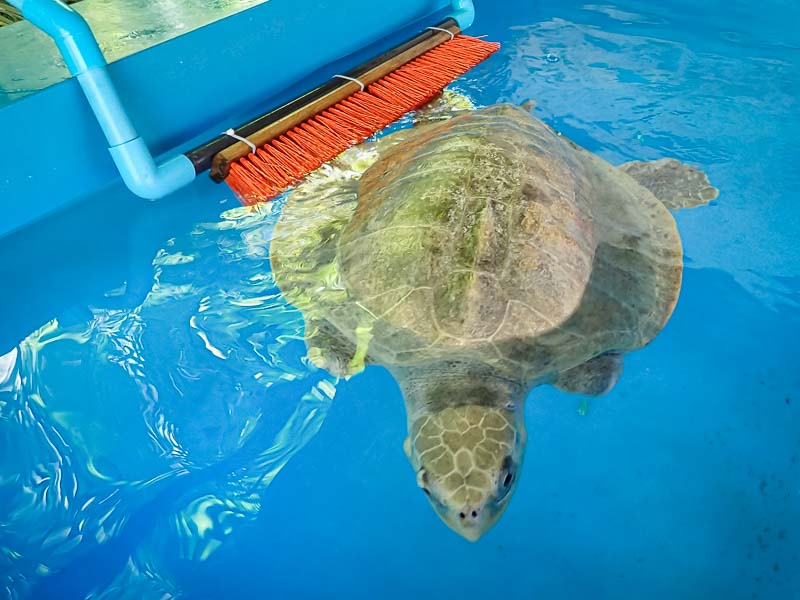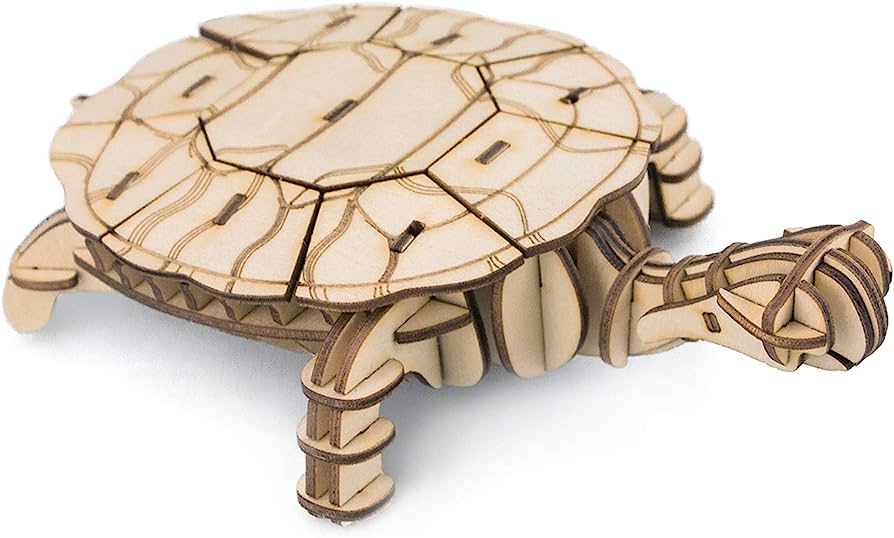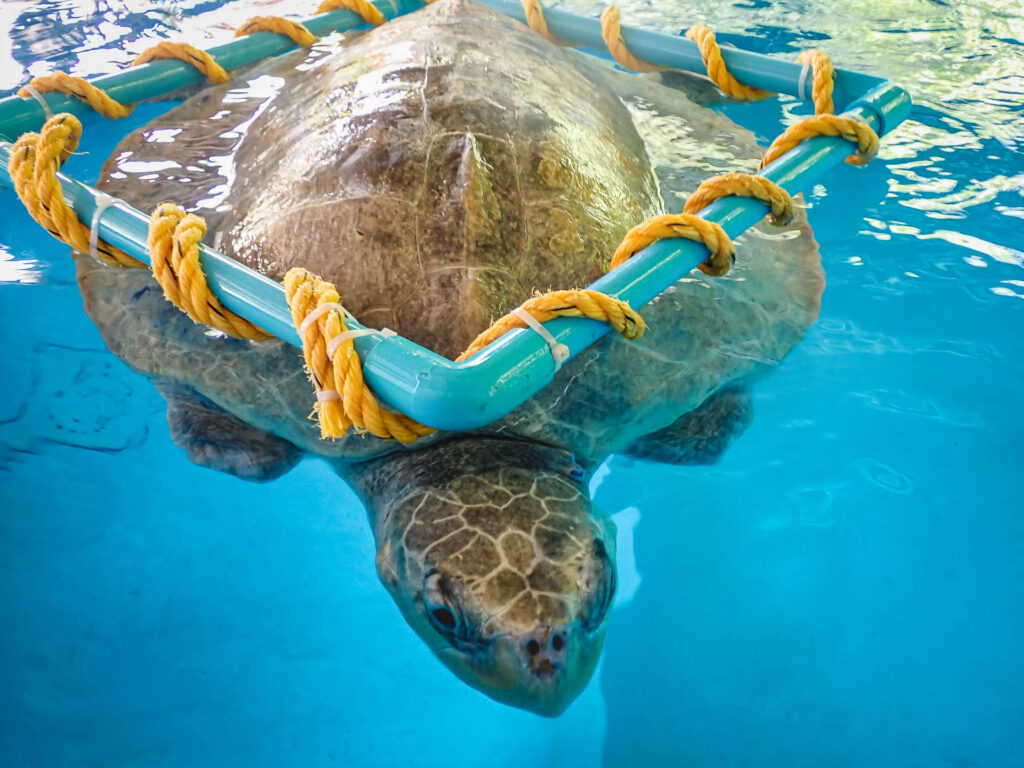Looking for ways to keep your turtle mentally stimulated? We all know that turtles are fascinating creatures, but did you know that they also need mental stimulation to thrive? Just like humans, turtles need activities that challenge their minds and keep them engaged. In this article, we will explore some DIY toy and activity ideas that you can try with your pet turtle. So grab a pen and paper, because you’re about to learn some exciting ways to keep your turtle’s brain buzzing!
One great way to provide mental stimulation for your turtle is by creating DIY toys. Turtles love to explore and interact with objects, so why not give them something fun to play with? Try making a puzzle box using an old shoebox and some small plastic balls. Cut holes in the sides of the shoebox and place the balls inside. Your turtle will have to figure out how to move the balls from one side of the box to the other. Not only will this provide mental stimulation, but it will also keep your turtle physically active as they push the balls around.
If you’re looking for something a bit simpler, you can also try hiding treats around your turtle’s enclosure. Turtles have a great sense of smell and love to hunt for food. Hide some treats, like small pieces of fruit or vegetables, in various places around the enclosure and let your turtle go on a scavenger hunt. This activity will keep their minds sharp as they search for their favorite snacks. These are just a few examples of the many DIY toy and activity ideas out there. Stay tuned for more suggestions in the upcoming article!

Why Turtle Enrichment is Important
Benefits of Mental Stimulation for Turtles
As a turtle owner, it is crucial to understand the importance of providing mental stimulation for your pet. Just like humans, turtles also require mental engagement to lead a fulfilling and healthy life. Mental stimulation provides various benefits for turtles, such as:
-
Preventing Boredom: Turtles are intelligent creatures that thrive when their minds are stimulated. Without appropriate mental enrichment, turtles can become bored, leading to undesirable behaviors like aggression, self-harm, or a lack of interest in their surroundings.
-
Promoting Physical Health: Mental stimulation often leads to increased physical activity and exercise for turtles. Engaging their minds can encourage them to explore their environment, swim, climb, and forage for food, resulting in improved muscle strength and cardiovascular health.
-
Reducing Stress: Turtles, like all animals, can experience stress due to various factors such as changes in their environment or lack of stimulation. Providing mental enrichment helps reduce stress levels by keeping their minds occupied and providing a sense of security and comfort.
-
Enhancing Cognitive Abilities: By engaging in mentally stimulating activities, turtles can improve their cognitive abilities. They learn problem-solving skills, memory retention, and develop better spatial awareness, all of which contribute to their overall mental development.
Signs of a Mentally Stimulated Turtle
It’s essential to recognize the signs of a mentally stimulated turtle to ensure that your efforts are effective. Here are a few indicators that your turtle is benefitting from the enrichment activities:
-
Exploration and Curiosity: A mentally stimulated turtle will show increased interest in its surroundings. It will explore its habitat, investigate objects, and exhibit a healthy level of curiosity.
-
Active and Engaged: A mentally stimulated turtle will be active and engaged in its environment, displaying various natural behaviors such as swimming, basking, foraging, and interacting with toys or enrichment items.
-
Problem Solving: Turtles that receive regular mental stimulation will exhibit problem-solving behaviors. They may try new ways to access food or navigate obstacles, showcasing their cognitive abilities.
-
Healthy Appetite: A mentally stimulated turtle will have a healthy appetite and actively engage in feeding interactions. They will show excitement and interest in food, encouraging natural foraging behaviors.
By providing mental stimulation and observing these signs, you can ensure that your turtle is leading a fulfilled and enriched life.
Creating DIY Toys for Turtles
Using Natural Materials for Turtle Toys
Creating DIY toys for your turtle using natural materials is not only cost-effective but also provides a closer-to-nature experience for your pet. Here are some ideas for DIY toys using natural materials:
-
Basking Platforms: Turtles love to bask under heat lamps, and providing a variety of basking platforms can enhance their mental stimulation. Use large rocks or driftwood to create platforms at different heights, allowing your turtle to choose its preferred spot.
-
Hiding Spots: Turtles often seek shelter and hide from time to time. Use hollow logs, coconut shells, or plant pots to create hiding spots in their enclosure. These hideaways offer a sense of security and encourage natural behaviors.
-
Feeding Toys: Incorporate natural materials into the feeding process to make it more exciting for your turtle. Use large, clean seashells to place food items or create mesh bags filled with leafy greens, encouraging your turtle to forage for its meals.
Making Puzzle Toys for Turtles
Puzzle toys provide mental challenges and promote problem-solving skills in turtles. Creating DIY puzzle toys can stimulate their minds and enhance cognitive abilities. Here are some ideas:
-
Food Dispensing Toys: Take a clean, empty plastic bottle with a wide mouth and cut multiple small holes into it. Fill the bottle with your turtle’s favorite food items and watch as it strategizes to get the food out through the holes.
-
Burrowing Bins: Take a shallow plastic container and fill it with reptile-safe substrate, such as topsoil or coconut coir. Hide treats or small toys within the substrate, encouraging your turtle to dig and search for them.
-
Floating Obstacle Courses: Using non-toxic materials like PVC pipes or floating platforms, create a maze-like structure in your turtle’s tank. Encourage your turtle to navigate through the obstacles to reach its food or treats.
Building an Interactive Feeding Station
An interactive feeding station combines mental stimulation and physical activity for turtles. It encourages them to use their natural foraging instincts and keeps them engaged during mealtime. Here’s how you can create one:
-
Food Dispensing Stations: Attach various objects, such as small plastic containers or PVC pipes, to the side of the tank near the water surface. Fill them with food and let your turtle learn how to retrieve the treats.
-
Live Food Hunting: Incorporate live food like crickets or mealworms into the feeding station. Place them within an enclosure, such as a plastic container with small holes, and let your turtle chase and hunt its prey.
-
Hanging Food Torches: Attach leafy greens or fruits to a hanging item, like a suction cup, and dangle it just above the water. This encourages your turtle to jump and reach for its food, stimulating both physical and mental activity.
By incorporating these DIY toys and feeding stations into your turtle’s habitat, you can provide endless hours of mental stimulation and keep your pet entertained and satisfied.

Engaging Activities for Turtles
Designing a Turtle Obstacle Course
Designing a turtle obstacle course is a fun and engaging activity that promotes physical exercise and mental stimulation. Here’s how you can create one:
-
Choose the Right Materials: Use non-toxic materials like PVC pipes, rocks, floating platforms, and plastic tunnels to create obstacles. Ensure that there are no sharp edges or corners that could harm your turtle.
-
Construct Different Levels: Create a multi-level obstacle course by using various objects at different heights. This will encourage your turtle to climb, bask, and explore its surroundings from different angles.
-
Include Challenges: Add tunnels, arches, or small barriers for your turtle to navigate. This will stimulate problem-solving skills and encourage exploration.
-
Place Food Rewards: Strategically place food rewards at different points along the course. This will motivate your turtle to complete the obstacles in order to reach the treats.
Designing and regularly changing your turtle’s obstacle course ensures that they are constantly challenged and engaged in physical and mental activities.
Introducing Novelty Items to Your Turtle’s Habitat
Introducing novelty items to your turtle’s habitat provides mental stimulation by creating new and exciting experiences for your pet. Here are some ideas:
-
Sensory Items: Add objects with different textures, shapes, and colors to your turtle’s environment. These items can include non-toxic floating rubber toys, sturdy plastic balls, or mirrors. Ensure that these items are securely placed, preventing any harm to your turtle.
-
Aquatic Plants and Decor: Add new plants, rocks, or aquatic decorations to create a visually appealing environment. This stimulates a turtle’s sense of curiosity and encourages exploration.
-
Moving Objects: Place floating items, like ping pong balls or small, clean plastic toys, in the water. These items will move with the flow or when your turtle interacts with them, providing an element of surprise and entertainment.
Introducing novelty items periodically prevents your turtle from becoming too familiar with its surroundings, keeping them mentally stimulated and engaged.
Creating a Sensory Exploration Area for Turtles
A sensory exploration area provides turtles with a dedicated space to engage their senses and satisfy their natural instincts. Here’s how you can create one:
-
Shallow Water Basin: Set up a separate shallow water basin within your turtle’s habitat. This area should have an appropriate water depth for your turtle to easily move around and explore.
-
Natural Objects: Place various objects, such as smooth rocks, shells, or logs, in the water basin. These objects will not only provide different textures and surfaces for your turtle to explore but also encourage natural behaviors like basking or hiding.
-
Variety of Smells: Introduce various plants or flowers, such as non-toxic aquatic plants or herbs, near the sensory area. Turtles have a strong sense of smell, and exposing them to different scents can stimulate their senses and natural foraging instincts.
-
Sound Stimulation: Consider playing soft, soothing music or nature sounds near the turtle’s habitat. This will create a calming ambiance and provide additional auditory stimulation.
By dedicating a specific area for sensory exploration, turtles can engage their senses and enjoy a more enriching and stimulating environment.
Proper Safety Precautions
Ensuring Toy and Activity Safety for Turtles
While providing mental stimulation and enrichment, safety should be a top priority. Ensure the following precautions for turtle toys and activities:
-
Non-Toxic Materials: Use materials that are safe for your turtle, such as PVC pipes, food-grade plastic containers, or reptile-safe substrate. Avoid any materials that may contain harmful chemicals or sharp edges.
-
Size of Toys: Ensure that the size of toys and enrichment items is appropriate for your turtle’s size. Avoid small objects that can be swallowed or cause choking hazards.
-
Secure Placement: Always securely fasten or anchor any toys or objects in your turtle’s habitat. This prevents them from easily toppling or causing harm to your turtle.
-
Regular Monitoring: Regularly inspect toys and enrichment items for signs of wear and tear. Replace damaged or broken items immediately to prevent any potential harm to your turtle.
Supervising Interaction with Enrichment Items
It’s important to supervise your turtle’s interaction with enrichment items to ensure their safety and prevent any potential accidents. Keep the following in mind:
-
Initial Monitoring: When introducing new toys or activities, closely observe your turtle’s behavior to ensure appropriate interaction. Some turtles may show aggression or frustration towards new items, and immediate intervention may be necessary.
-
Time Limitations: Provide enrichment activities for a limited duration initially and gradually increase the duration as your turtle becomes more comfortable. This helps prevent overstimulation or exhaustion.
-
Adult Supervision: Always supervise any interaction between children or other pets and your turtle’s enrichment items. Ensure that they do not mishandle or pose a threat to your turtle or its environment.
By taking proper safety precautions and monitoring your turtle’s interaction, you can provide an enriching environment without compromising their well-being.

Tailoring Enrichment to Specific Turtle Species
Enrichment Ideas for Aquatic Turtles
Aquatic turtles require enrichment activities that focus on their natural behaviors, swimming abilities, and need for basking areas. Here are some enrichment ideas for aquatic turtles:
-
Underwater Tunnels: Create PVC pipe tunnels or floating hoops attached to weights that your aquatic turtle can swim through and explore.
-
Water Currents: Use submersible aquarium pumps or air stones to create gentle water currents that simulate natural river currents. This encourages swimming and provides an engaging environment for your turtle.
-
Floating Platforms: Install floating platforms or logs to provide resting areas and basking spots above the water surface. Ensure that they are securely anchored to prevent tipping or instability.
Enrichment Ideas for Semi-Aquatic Turtles
Semi-aquatic turtles require both aquatic and terrestrial enrichment activities. Here are some ideas to provide them with a well-rounded enrichment experience:
-
Land Mounds and Hiding Spots: Create land mounds within their habitat using non-toxic soil or sand. Plant turtle-safe grasses or create natural hiding spots to encourage terrestrial exploration.
-
Aquatic and Land Food Stations: Place food stations both in the water and on land to encourage foraging behaviors. This gives semi-aquatic turtles an opportunity to hunt for food in various environments.
-
Basking Perches: Provide sturdy basking perches that allow your semi-aquatic turtles to fully bask while still partially submerged in water. This accommodates their preference for both land and water environments.
Enrichment Ideas for Box Turtles
Box turtles are primarily terrestrial and require enrichment activities that cater to their natural instincts. Here are some ideas for enriching the lives of box turtles:
-
Burrowing Substrate: Provide a deep layer of appropriate substrate such as topsoil, coconut coir, or a mixture of both. Box turtles enjoy digging and burrowing, and this allows them to exhibit their natural behavior.
-
Hideaways and Hiding Spots: Create hideaways using logs, plant pots, or rocks for your box turtle to retreat to when they require privacy and a sense of security.
-
Edible Landscaping: Incorporate edible plants like dandelions or hibiscus within the enclosure. This encourages natural foraging behaviors and provides a varied diet for your box turtle.
By tailoring enrichment activities specific to their species, you can ensure that your turtle’s needs are met and that they have a well-rounded and engaging environment.
Challenges and Solutions in Turtle Enrichment
Overcoming Boredom in Turtles
Boredom is a common challenge that turtle owners face, which can lead to various behavioral issues. Here are some solutions to overcome boredom in turtles:
-
Rotate Toys and Activities: Regularly change and rotate toys, feeding stations, and obstacles in your turtle’s habitat. This keeps the environment fresh and prevents them from becoming bored with their surroundings.
-
Provide Interactive Toys: Incorporate toys that encourage interaction and problem-solving, such as puzzle feeders or floating toys that require manipulation to access treats.
-
Outdoor Enclosure Time: If possible, provide supervised outdoor time in a safe and secure outdoor enclosure. Exposure to natural elements, sights, and smells can greatly alleviate boredom in turtles.
Addressing Aggression in Turtles during Enrichment Activities
Aggression can sometimes occur during enrichment activities, especially when multiple turtles are housed together. Here are some strategies for addressing aggression:
-
Individual Spaces: Provide separate spaces for each turtle during enrichment activities. This reduces competition and allows each turtle to enjoy the activities without interference.
-
Separate Feeding Areas: If feeding stations are involved, ensure that each turtle has its own designated area for feeding. This prevents competition and potential conflicts between turtles.
-
Observe Body Language: Pay close attention to your turtles’ body language for signs of aggression, such as hissing, biting, or shell ramming. If aggression is observed, immediately separate the turtles to prevent any potential harm.
Handling Enrichment for Shy or Skittish Turtles
Shy or skittish turtles may require additional care and patience when introducing enrichment activities. Here are some tips for handling enrichment for shy or skittish turtles:
-
Gradual Introduction: Introduce new toys or activities slowly, allowing your turtle to become familiar with each item at its own pace. Gradually increase the complexity of the enrichment to prevent overwhelming your turtle.
-
Positive Reinforcement: Use positive reinforcement techniques, such as offering favorite treats or praise, to encourage your turtle’s participation in new enrichment activities. This helps build trust and confidence over time.
-
Quiet and Calm Environment: Provide a quiet and calm environment while introducing new enrichment. Avoid sudden noises or disturbances that may startle or scare your turtle.
By understanding and addressing the challenges associated with turtle enrichment, you can provide a safe and enriching environment that caters to their specific needs.

Monitoring and Assessing Enrichment
Observing Behavioral Changes in Turtles
Monitoring your turtle’s behavior is crucial to evaluate the effectiveness of enrichment activities. Pay attention to the following behavioral changes:
-
Increased Activity: A mentally stimulated turtle will display increased activity levels, such as swimming, exploring, or interacting with enrichment items.
-
Improved Feeding Response: Mentally stimulated turtles often show a heightened interest in food and actively engage in feeding interactions. They may exhibit more natural foraging behaviors while searching for treats.
-
Curiosity and Engagement: A turtle that is benefiting from enrichment will display curiosity and engagement with its environment. This can include investigating toys, exploring new areas, or showing interest in novel objects.
-
Tolerating Changes: Turtles that are effectively enriched are better able to tolerate changes in their environment, such as the introduction of new toys or modifications to their habitat layout.
Regularly monitoring these behavioral changes will help you assess the impact of the enrichment activities and make adjustments as necessary.
Evaluating the Effectiveness of Enrichment Activities
Evaluating the effectiveness of enrichment activities is essential to ensure that your turtle is receiving optimal mental stimulation. Here are some ways to evaluate the effectiveness:
-
Keep a Enrichment Journal: Maintain a journal to document the different enrichment activities, toys, and strategies you have implemented, as well as observations of your turtle’s response. This helps you track which activities are most engaging for your turtle.
-
Trial and Error: Implement various enrichment activities and toys over time and observe their impact on your turtle’s behavior and well-being. This will help you identify which activities are the most effective and enjoyable for your turtle.
-
Seek Advice: Consult with other turtle owners or reptile experts to get suggestions and recommendations for enrichment activities that may work well for your specific turtle species.
Regularly assessing the effectiveness of enrichment activities ensures that you are providing the most suitable and engaging environment for your turtle.
Long-Term Enrichment Plans for Turtles
Rotating and Refreshing Toys and Activities
To prevent your turtle from becoming bored or habituated to its environment, it is important to rotate and refresh the toys and activities regularly. Here’s how you can create a long-term enrichment plan:
-
Weekly Rotation: Set a schedule to rotate toys or introduce new activities on a weekly basis. This prevents your turtle from getting too accustomed to its surroundings and keeps its environment stimulating.
-
Introduce New Toys: Continuously search for new turtle toys and items that can be safely incorporated into their environment. This ensures that your turtle has a diverse range of toys and activities to engage with.
-
Observe Preferences: Observe your turtle’s preferences and reactions to different types of toys and activities. Tailor the enrichment plan to incorporate more of what your turtle enjoys, ensuring they remain engaged and stimulated.
By implementing a long-term enrichment plan, you provide your turtle with a constantly evolving and engaging environment that promotes mental stimulation and prevents boredom.

Additional Considerations for Turtle Enrichment
Providing Proper Lighting and Heat for Turtles
Apart from mental stimulation, ensuring appropriate lighting and heat is crucial for the well-being of turtles. Consider the following:
-
UVB Lighting: Turtles require exposure to UVB light to synthesize vitamin D3 and metabolize calcium effectively. Invest in a high-quality UVB light fixture and replace the bulb as recommended by the manufacturer.
-
Basking Areas: Provide a dedicated basking area with a heat lamp or ceramic heat emitter to create a warm spot for your turtle to regulate its body temperature effectively.
-
Temperature Gradients: Maintain a temperature gradient within the enclosure, allowing your turtle to thermoregulate by moving between warmer and cooler areas as needed. This mimics their natural habitat and enhances their overall well-being.
Including Social Interaction in Enrichment Strategies
Turtles, although not typically social in the same way as mammals, can still benefit from social interaction during enrichment activities. Consider the following:
-
Observation and Vocal Interaction: Spend time observing and talking to your turtle during enrichment activities. Although they may not respond in the same way, your presence can provide a sense of security and companionship.
-
Introducing Turtles: When appropriate, introduce compatible turtles to create a semi-social environment. Ensure that the turtles are of similar size and species, and always monitor their interactions to prevent aggression or bullying.
-
Environmental Enrichment: Turtles can benefit from observing other aquatic creatures, such as fish or small invertebrates, in their habitat. This provides visual stimulation and a sense of natural interaction.
Including social interaction in enrichment strategies can alleviate stress, provide a sense of companionship, and enhance the overall well-being of your turtle.
Conclusion
Turtle enrichment is a vital aspect of responsible pet ownership. Providing mental stimulation through DIY toys, engaging activities, and thoughtful environmental design offers numerous benefits for your turtle’s physical and mental health. By tailoring enrichment ideas to specific turtle species, implementing safety precautions, and regular monitoring, you can create a stimulating and fulfilling environment that enhances your turtle’s well-being. Remember to rotate and refresh toys and activities, create a long-term enrichment plan, and provide appropriate lighting and social interaction to ensure your turtle’s enrichment needs are met. With these ideas and considerations, you are well-equipped to create a vibrant and engaging habitat that will keep your turtle happy, healthy, and mentally stimulated for years to come.